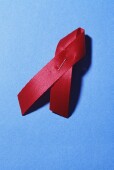
MONDAY, Oct. 8 (HealthDay News) — HIV death rates in the United States declined for most groups of people between 1993 and 2007, according to a large new study.
Researchers analyzed data on more than 91,000 HIV-related deaths that occurred among people aged 25 to 64 in 26 states. They looked for trends in deaths by sex, race and ethnicity, and education level, which was used to estimate socioeconomic status.
There were significant declines in deaths related to HIV — the virus that causes AIDS — for all groups except poor, black women. Declines were greater for people with higher levels of education and for whites, said Edgar Simard, of the American Cancer Society, and colleagues.
Among men with the most education, death rates per 100,000 fell from 118 to 15 in blacks and from 26 to about two in whites. Rates did not change for the least-educated black women (27 from 2005 to 2007) and remained high for black men with 12 or fewer years of education (53).
The researchers noted that the death rate among black men with the lowest levels of education was more than twice as high as the rate among white men with low levels of education before HIV therapies became widely available (26 per 100,000 from 1993 to 1995).
The study was published online Oct. 8 in the journal Archives of Internal Medicine.
Although widespread use of highly active antiretroviral therapy (HAART) has led to sharp declines in HIV-related deaths overall, not all groups of HIV patients have benefited equally from the therapy’s availability, the researchers noted.
They added that many factors influence racial and ethnic disparities in HIV death rates, including differences in infection rates, delays in diagnosis and the length of time it takes to begin HAART treatment.
The findings suggest the need for increased efforts to identify people at risk for HIV, as well as improved access to care for the most vulnerable groups, the researchers concluded.
More information
The U.S. National Institute of Allergy and Infectious Diseases has more about HIV/AIDS.

